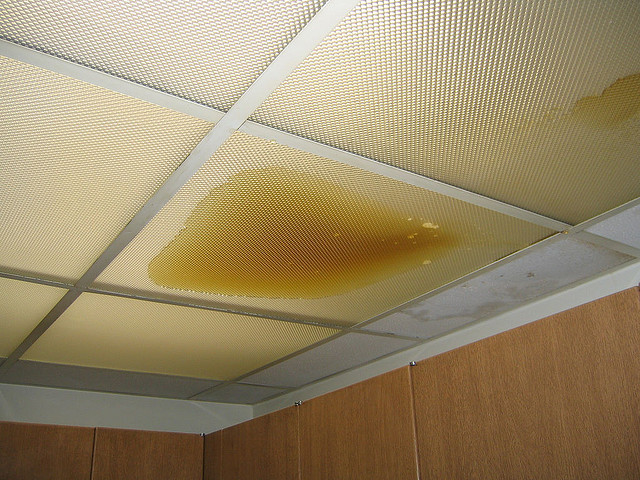This article in the next paragraphs about Top leak detection hacks is especially enjoyable. You should check it out.

Early discovery of dripping water lines can mitigate a potential calamity. Some tiny water leakages may not be visible.
1. Examine the Water Meter
Every house has a water meter. Checking it is a guaranteed way that helps you find leaks. For beginners, switch off all the water sources. Make sure no person will purge, use the tap, shower, run the cleaning device or dish washer. From there, go to the meter as well as watch if it will change. Given that nobody is using it, there need to be no activities. If it relocates, that suggests a fast-moving leak. Similarly, if you detect no changes, wait a hr or two and also inspect back once again. This implies you may have a sluggish leak that can also be below ground.
2. Examine Water Consumption
Evaluate your water expenses as well as track your water intake. As the one paying it, you need to see if there are any kind of discrepancies. If you spot sudden changes, despite your consumption being the same, it suggests that you have leakages in your plumbing system. Bear in mind, your water expense ought to fall under the same array on a monthly basis. An abrupt spike in your expense indicates a fast-moving leakage.
A consistent rise every month, even with the exact same habits, reveals you have a sluggish leakage that's additionally slowly intensifying. Call a plumber to completely check your residential or commercial property, particularly if you feel a warm location on your floor with piping beneath.
3. Do a Food Coloring Test
When it comes to water usage, 30% comes from bathrooms. If the color in some way infiltrates your bowl throughout that time without flushing, there's a leak in between the container as well as bowl.
4. Asses Exterior Lines
Do not forget to examine your outdoor water lines also. Needs to water seep out of the link, you have a loosened rubber gasket. One tiny leakage can waste lots of water as well as increase your water costs.
5. Analyze the circumstance and evaluate
Homeowners should make it a habit to inspect under the sink counters and also even inside closets for any bad odor or mold and mildew growth. These 2 red flags suggest a leak so prompt interest is needed. Doing routine evaluations, also bi-annually, can save you from a major trouble.
Examine for discolorations as well as weakening as many pipelines and also devices have a life span. If you believe dripping water lines in your plumbing system, do not wait for it to rise.
Early detection of dripping water lines can reduce a prospective disaster. Some tiny water leakages might not be noticeable. Examining it is a proven means that helps you discover leaks. One little leakage can throw away tons of water and also increase your water expense.
If you think leaking water lines in your plumbing system, do not wait for it to intensify.
How to Know If Your Home Has a Hidden Leak
Water Meter Reveals Inexplicable Water Usage
If you’d like to test whether or not there’s a leak somewhere in your home, you can do this using your water meter. Here is how to conduct the test:
Don’t use any water in your home for at least 30 minutes; this also means not turning on faucets or water-using appliances.
Go outside, and check your water meter for activity.
If your water meter shows that there was activity, even though no one was using any water, this proves that there is a leak in your home.Visible Mold or Mildew Growth
Leaks behind walls create moist, dark environments that allow mold and mildew to grow and thrive. Eventually, you might see mold growth forming on the wall closest to a hidden leak.
If mold is growing in an area that receives a high amount of moisture, such as a bathroom, it may simply be an indication that better ventilation is needed. However, if you see mold growth on a wall or the ceiling in an area where you would not expect, you probably have a hidden leak.
Musty, Mildew Odor
Sometimes you might not be able to see the mold or mildew that is growing as a result of a leak. However, the smell can give the problem away just as easily. If you catch a whiff of something musty, there’s a good chance that old water is collecting somewhere in your home that you can’t see.
Stained/Warped Walls, Ceilings, or Floors
When your home soaks up water, a variety of red flags can become visible, including ceiling stains, bubbling drywall, warped walls, and sagging floors. While these issues can be caused by excess humidity, they can also be signs that a pipe or plumbing connection has started leaking behind your walls.
Inexplicably High Water Bill
After a while, you get a general sense for what your water bill should be. If you own a pool or sprinkler system, your bill will tend to be higher during summer. However, if you receive a water bill that seems especially high, and you can’t figure out what caused it, then you may have a hidden leak somewhere that’s increasing your bill.
https://www.plumbingjoint.com/blog/2019/july/how-to-know-if-your-home-has-a-hidden-leak/
.jpg)
We were brought to that report about Top leak detection hacks from an associate on another site. So long as you appreciated our page please be sure to pass it around. Thanks a lot for going through it.
Call for expertise!